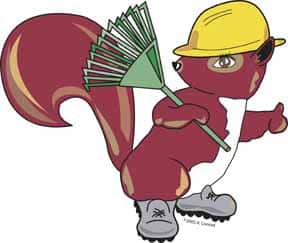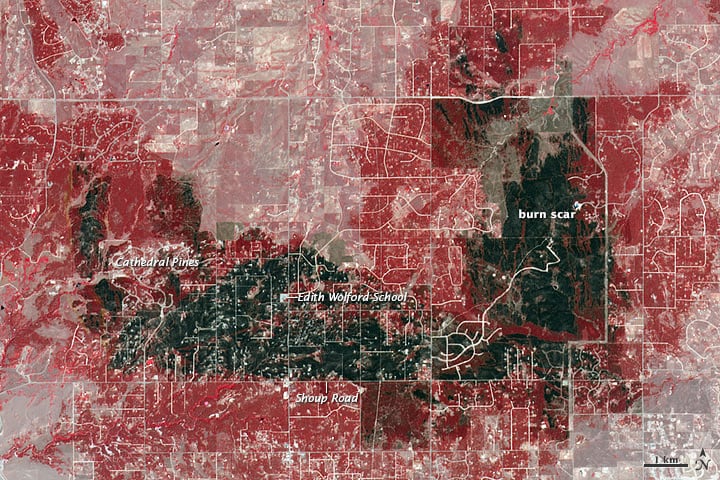I’m pleased to announce that the homeowners and community of Cathedral Pines are the first recipients of the Reddy Squirrel “Forest Fires Happen, Be Ready” Award for Fire Pragmatism. As reported in the Denver Post, “El Paso County Sheriff Terry Maketa said the Cathedral Pines area was a textbook example of fire prevention.”
Colorado’s Black Fire destroyed a record 511 homes, but although the fire swept through the Cathedral Pines development, “I think they lost one or two homes, but the fire stayed on the ground there,” Maketa said. “The reason the firefighters were able to take a stand was because these homeowners had mitigated their properties,” Maketa said.
EarthSky, with which NPR listeners are familiar, discusses this NASA Terra satellite image taken a few days after the Black Fire, which shows the lower fire severity within Cathedral Pines. And here’s a cool site of aerial photos from the Black Fire. Note the lack of damage in this photo compared to this.
Congratulations, Cathedral Pines!


I did see news footage where firefighters were doing the work for the homeowners, as the fire was burning. How many homes were saved because of the hard work of firefighters during hazardous conditions? Yes, there are several key things that need to be done in communities like these. Otherwise, firefighters might just determine that it is too dangerous to save those homes, because fuels have been “preserved”.
What is odd looking through the pictures is how many homes were torched even with minimal canopy mortality around them,it often looks like a moderate ground fire that hit the homes in some places. Dealing with this through prescribed burns might have been easy and it would not have taken much to protect the homes (?).
But of course such prescribed fires would have met vehement opposition and hard to accomplish is such a densely inhabited area.
greg: You are right about the need for regular prescribed fire and the vehement opposition likely to oppose it. However, from a logistical standpoint, human population density isn’t a real factor. Vacant lots can be readily burned in densely populated areas just as easy as in rural areas — except for the vehement opposition.
The FS’s Jack Cohen has pointed out that homes are often more flammable than the surrounding forest. So when firebrands fly, it is homes that ignite, not the forest. Jack’s got hundreds of pictures showing burned-to-the-ground homes surrounded by green trees with bark scorched only on the side facing the house.
Same thing seemed to happen at Tahoe in 2007, the treated areas around the homes and in the center of development mostly came through fine but the densely placed houses went off like a row of matchboxes despite the success of the treated areas in reducing severity.
Over and over I’ve seen those cedar shake roofs, which is like putting kindling on their house. Add some pines needles to that, and a rickety deck….
they go off even without shake roofs, I am told that sparks can be sucked up into vents and and windows implode with the heat, those houses in black forest did not have shake roofs and the homes at tahoe had little fuel around them. But once one house lights off, the one next to it can light next.